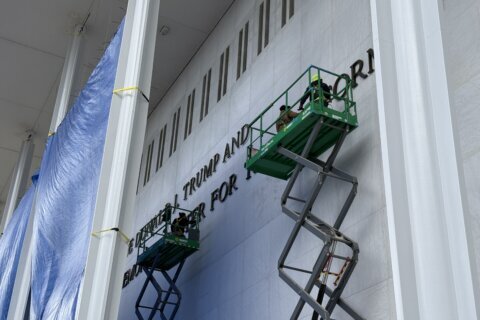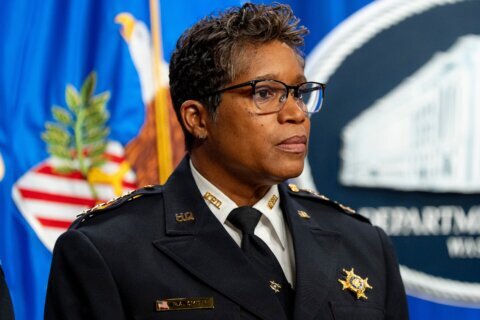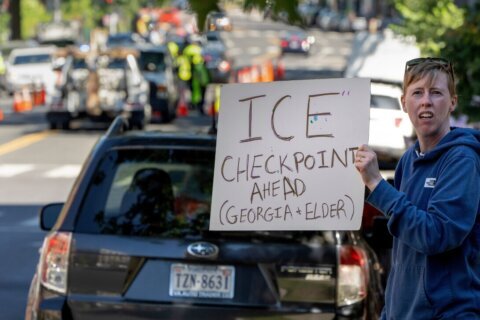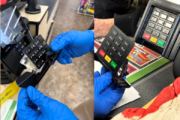On Friday morning, one of D.C.’s Safe Passage Ambassadors stopped for coffee on her way to her designated school zone. Even though she hadn’t put her bright vest on yet, she stepped in to prevent a child from getting his sneakers stolen. The child was appreciative.
When the student’s school learned about the incident, they followed up on what happened to see if they could talk to the students who tried to perpetrate the robbery.
Cameron Schuster, program director for the Safe Passage program with the National Association for the Advancement of Returning Citizens, said the circumstances reveal the role the ambassadors play in intervening when “they see something taking place that shouldn’t be happening.”
This week, Mayor Muriel Bowser announced $10 million in funding for four groups tasked with providing ambassadors in different parts of the city in fiscal 2025.
“We have seen definite reductions in the number of robberies, the number of fights or violent incidents outside of the school during the school day, during arrival and dismissal,” Schuster said. “And we’ve got a lot of schools who … really rely on us to be that external layer of support.”
Schuster helps coordinate with 42 staff members who operate in safety zones in Wards 7 and 8. Ambassadors there work in three major zones in and around seven D.C. public or public charter schools.
They aim to hire more community members who have a passion for giving back, he said.
The Safe Passage Ambassadors are responsible for making sure students are safe while they travel to and from school. They’re sometimes confused for crossing guards, because of the bright vests they wear and because they stand on corners or in alleys.
They work shifts of either 8 a.m.-10 a.m. or 2 p.m.-5:30 p.m., with the goal of building relationships between students, teachers and school administrators.
Part of the afternoon role involves helping students exit school zones “with as much safety wraparound services as possible, so that we reduce the number of violent incidents, robberies or any other nefarious behavior that students could possibly be involved in or have perpetrated against them,” Schuster said.
If there are hazards in a given school zone, Schuster said the ambassadors will identify them and they’ll also intervene if lights aren’t working or if there are car crashes.
When the bulk of drop-off and dismissal are over, Schuster said “the staff will then walk safety routes at a minimum of five times per hour throughout the community,” in some cases helping to identify students who are skipping school.
The other groups that got similar grants for FY 2025 include Center for Nonprofit Advancement, Collaborative Solutions for Communities and National Association for the Advancement of Returning Citizens.
“In communities of color here in D.C., it’s very important that we have as many folks involved in the prevention of crime and violent activities, because there’s just too many lives being lost to gun violence and unnecessarily being taken away from the community,” Schuster said.
Get breaking news and daily headlines delivered to your email inbox by signing up here.
© 2024 WTOP. All Rights Reserved. This website is not intended for users located within the European Economic Area.








